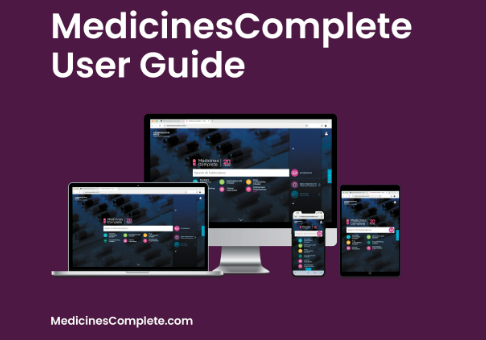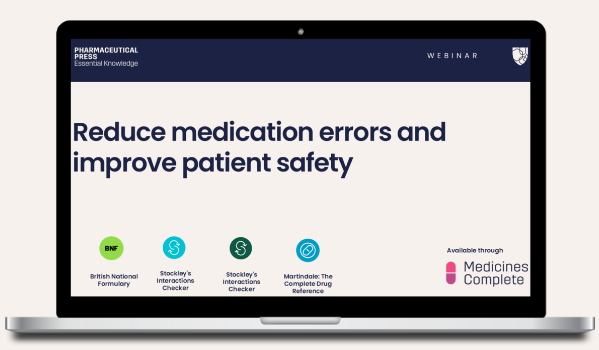18 December 2025
December BNF + BNFC Content Updates
![]() British National Formulary
British National Formulary
This update contains 15 significant changes, 1 dose change, 2 new preparations, and 11 deleted monographs.
Significant changes
Amoxicillin: updated indications and dose for prophylaxis of recurrent urinary-tract infection.
Benralizumab: new indication and dose for eosinophilic granulomatosis with polyangiitis.
Bismuth potassium with metronidazole and tetracycline hydrochloride: name change to bismuth subcitrate potassium with metronidazole and tetracycline hydrochloride.
Cefalexin: updated indications and dose for prophylaxis of recurrent urinary-tract infection.
Citalopram: new indications and dosing for known CYP2C19 poor metabolisers, and update to structure of dosing for depressive illness and panic disorder.
Escitalopram: new indications and dosing for known CYP2C19 poor metabolisers.
Human alpha1-proteinase inhibitor: name change to alpha1-proteinase inhibitor.
Isotretinoin: updates to prescribing guidance and survey of services [MHRA/CHM advice].
Nitrofurantoin: updated indications and dose for prophylaxis of recurrent urinary-tract infection.
Rasburicase: harm from delayed administration of rasburicase for tumour lysis syndrome [National Patient Safety Alert advice].
Semaglutide (Ozempic®): updated dose equivalence and conversion statement.
Semaglutide (Rybelsus®): updated indications and dose for type 2 diabetes mellitus, and important safety information.
Sodium clodronate: name change to clodronate disodium.
Trimethoprim: updated indications and dose for prophylaxis of recurrent urinary-tract infection.
Ulipristal acetate: updated breast-feeding advice.
Dose changes
Infliximab [update to dosing for active ulcerative colitis, active Crohn’s disease and fistulating Crohn’s disease].
New preparations
Enalto® [escitalopram] for Depressive illness, Generalised anxiety disorder, Obsessive-compulsive disorder; for Depressive illness [known CYP2C19 poor metabolisers], Generalised anxiety disorder [known CYP2C19 poor metabolisers], Obsessive-compulsive disorder [known CYP2C19 poor metabolisers], for Panic disorder; for Panic disorder [known CYP2C19 poor metabolisers]; for Social anxiety disorder; for Social anxiety disorder [known CYP2C19 poor metabolisers].
Rybelsus® 1.5 mg, 4 mg, and 9 mg round tablets [semaglutide] for Type 2 diabetes mellitus as monotherapy (if metformin inappropriate), or in combination with other antidiabetic drugs (including insulin) if existing treatment fails to achieve adequate glycaemic control.
Deleted monographs
Adefovir dipivoxil.
Aspirin with codeine.
Bezlotoxumab.
Castor oil with collodion and colophony.
Colestipol hydrochloride.
Diclofenac.
Macrogol 3350 with anhydrous sodium sulfate, potassium chloride, sodium bicarbonate and sodium chloride.
Mobocertinib.
Ocriplasmin.
Potassium bicarbonate with potassium acid tartrate.
Ranitidine.
![]() BNF for Children
BNF for Children
This update contains 9 significant changes, and 5 deleted monographs.
Significant changes
Amoxicillin: updated indications and dose for prophylaxis of recurrent urinary-tract infection.
Cefalexin: updated indications and dose for prophylaxis of recurrent urinary-tract infection.
Isotretinoin: updates to prescribing guidance and survey of services [MHRA/CHM advice].
Nitrofurantoin: updated indications and dose for prophylaxis of recurrent urinary-tract infection.
Rasburicase: harm from delayed administration of rasburicase for tumour lysis syndrome [National Patient Safety Alert advice].
Rasburicase: update to indication and dosing.
Sodium clodronate: name change to clodronate disodium.
Trimethoprim: updated indications and dose for prophylaxis of recurrent urinary-tract infection.
Ulipristal acetate: updated breast-feeding advice.
Deleted monographs
Castor oil with collodion and colophony.
Colestipol hydrochloride.
Macrogol 3350 with anhydrous sodium sulfate, potassium chloride, sodium bicarbonate and sodium chloride.
Potassium bicarbonate with potassium acid tartrate.
Ranitidine.





